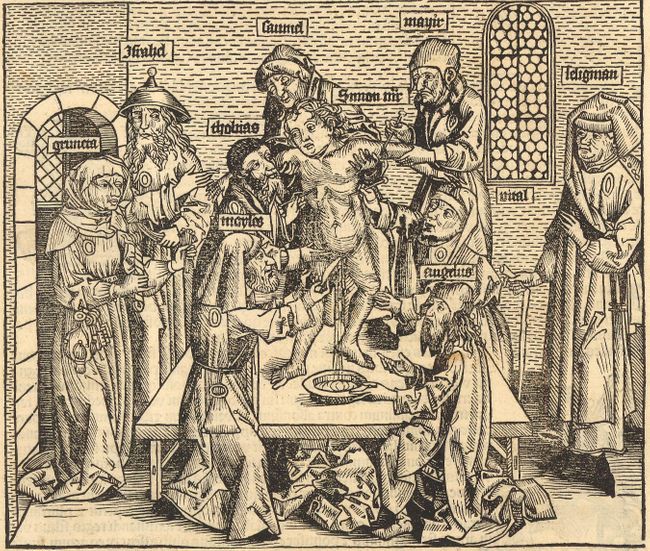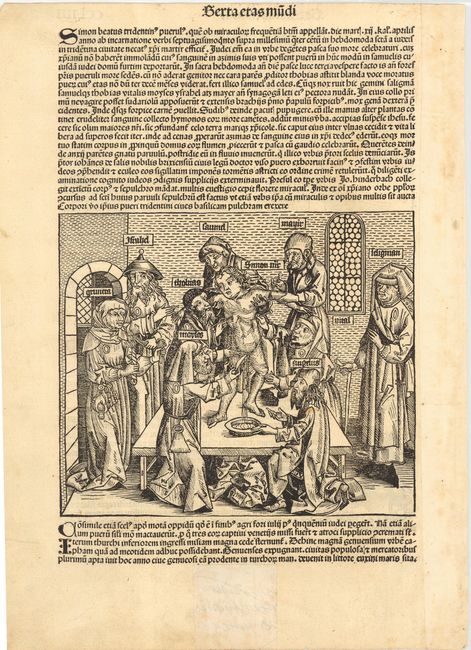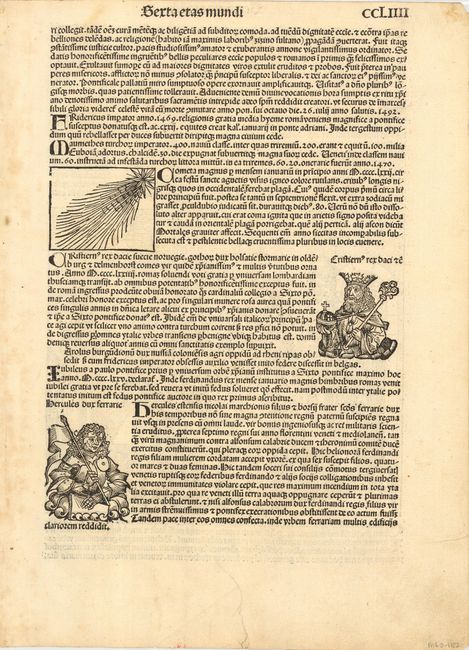Subject: Incunabula
Period: 1493 (published)
Publication: Liber Chronicarum
Color: Black & White
Size:
9 x 7.6 inches
22.9 x 19.3 cm
Hartmann Schedel's Nuremberg Chronicle (Liber Chronicarum) was published in two editions, Latin and German, both in 1493, appearing in print just before Christopher Columbus' discoveries completely re-shaped the European view of the World. This splendid work presented the history of the world in a pictorial encyclopedia with approximately 285 pages of text and 1,800 woodcut illustrations. Among these illustrations are views of towns and cities throughout Europe and the Near East. The majority of these views are entirely imaginary. In fact, 49 of the views are actually printed from the same group of 14 woodblocks. There are also 30 double-page views of cities with more realistic images. In addition to the topographical images, there are an enormous number of other subjects, including diagrams of the Creation, comets, family trees, portraits & biblical scenes. The text was compiled and edited by Hartmann Schedel, printed by Anton Koberger, with illustrations designed by Michael Wohlgemuth and Willem Pleydenwurff, who cut the woodblocks, probably with the assistance of their apprentice, Albrecht Durer.
In this 15th century woodcut, Jews are depicted murdering the child Simon of Trent. This 'murder' is one of the sources of the medieval blood libel: the allegation that Jews used Christian children's blood to make matzoth (unleavened bread) during Passover. The Jews can be recognized by the circular patches sewn on their clothing and by the moneybags they carry. This image is often erroneously called the circumcision, but it is actually a representation of this alleged event, which took place in Trento, Italy in 1475. This is an important image in the history of anti-Semitism and was used most recently in Nazi propaganda. Recto includes two portraits and an illustration of a comet.
References:
Condition: A
Dark impression. Old repair on tear in bottom blank margin and light surface soil.




